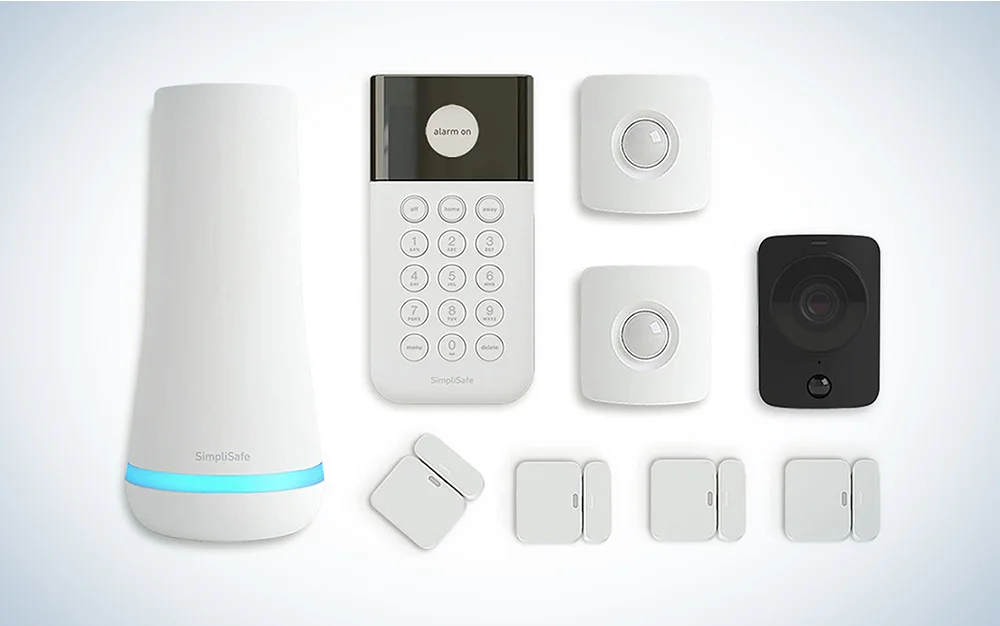A growing number of consumers are interested in DIY home security systems. Before you jump in, consider a few key factors that will determine the best set-up for your installation.
Choose a system that connects to smart home devices and offers optional disaster sensors like smoke and water detectors. Some of the top options include Abode, which integrates with heavy-hitters like Alexa and Google Assistant, as well as Apple HomeKit and Z-Wave devices.
Install a Smart Door Lock
Embracing DIY home security updates empowers you to save on installation costs and customize your system. For instance, single-board computers like the Raspberry Pi offer DIY enthusiasts a chance to create a centralized monitoring hub and integrate custom functionalities for their systems.
Make sure to invest in a smart door lock that offers tamper-resistant and anti-pick features. Additionally, a reliable cellular backup system allows devices to stay connected even when internet connection is lost.
Build a Solar-Powered Alarm
A smart alarm system with audible alerts will scare away would-be intruders. Consider adding a smart smoke and carbon monoxide detector for early detection of these potential hazards.
Ensure that your DIY security devices stay powered with backup power solutions. Uninterruptible power supply (UPS) units offer battery backup during blackouts and other unforeseen circumstances.
Use timers to turn lights on and off at different times to give the impression that someone is home.
Build a Smart Smoke Detector
A smart smoke detector can help protect your home from a fire. It replaces your existing backup battery and connects to a hub for monitoring.
SimpliSafe is a popular DIY security system that offers affordable starter kits and an impressive array of add-on sensors. Its self-monitoring options are free, but a monthly subscription is available for enhanced features and professional monitoring.
Build a Smart Doorbell
Homeowners that adopt DIY security options gain greater control, customization, and flexibility over their home security measures. By addressing power-related concerns, integrating environmental sensors, and optimizing remote monitoring capabilities, homeowners can ensure their system is capable of protecting their property and loved ones.
Consider replacing a traditional doorbell with a video one that features two-way audio and motion detection. This can deter criminals from attempting to burglarize your house by scaring them away.
Build a Smart Door Lock
No home is completely burglar proof, but tackling these projects can help fortify your property and keep intruders at bay. These weekend projects are easy enough for any homeowner to tackle and can make a big difference in your home security.
Connectable consumer products that can be controlled remotely are another good way to improve your DIY home security. However, these devices can also be hacked, so it’s important to take security into account when using them.
Build a Smart Keypad
We’ve all seen those movies where valuable artifacts are protected by a laser maze and alarm that goes off whenever someone approaches. This DIY project on Instructables can help you build something similar as part of your home security system.
Overlooking password changes and neglecting software updates can leave your devices vulnerable to exploits. Be sure to update them regularly. Incorporating backup power solutions can also help ensure your devices stay safe during a power outage.
Build a Smart Camera
In a few hours, homeowners can turn an ordinary camera into a state-of-the-art security solution. Wired cameras draw power from an electrical outlet, while wireless options feature battery backups and flexible mounting.
Single-board computers like the Raspberry Pi make it easy to add sensors, alarms, and other functionalities to a DIY home security system. Brands like First Alert and Samsung SmartThings offer interconnected smoke and carbon monoxide detectors and water leak sensors to safeguard against fire and water hazards.
Build a Smart Doorbell
Burglaries happen frequently and can leave homes vulnerable. While no home is completely burglar proof, implementing cost-effective DIY security projects can make your home less of a target.
The best DIY home security systems are simple to set up and operate over your own Wi-Fi network. For example, SimpliSafe offers a system package with a base station and basic sensors for $300.
Build a Smart Smoke Detector
Using inexpensive timers, you can set your lights to turn on and off at different times to simulate occupancy and deter burglars. Also, consider hanging a home security sign to let criminals know you’re protected.
Changing default passwords and regularly evaluating your system’s effectiveness can keep your DIY setup in good shape. Also, incorporating backup power solutions can make a big difference when the power goes out.
Build a Smart Door Lock
Instead of hiding a house key under the mat or in the shed, use an electric smart door lock that can be monitored from your smartphone. Burglars might not even realize they’re being tracked!
To complete your DIY security system, consider adding environmental sensors like First Alert smoke and carbon monoxide detectors or Samsung SmartThings water leak sensor. These can trigger alarms and prevent costly damage to your home.


